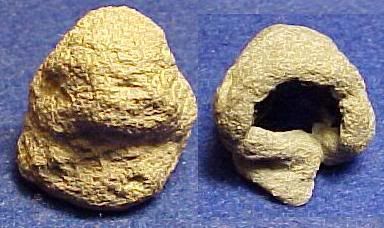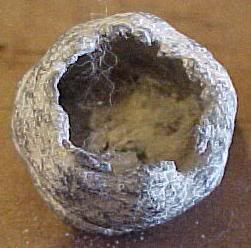Yup, most mentioned have 14" or 16" twist with possibly a 12" twist with the .223. Do the math (including for the '06 with a probable 10" twist) and we see all of them are losing accuracy right 140,000 RPM or slightly before with regular alloys and regular cast bullets. I wonder why that is......

I conducted a high velocity test today that demonstrates how the adverse affect of increased RPM becomes noticeable and very evident. Recently I switched from M118 match cases to fire formed WW Palma cases. With the thinner WW cases there was greater case capacity and I was able to comfortably get 50 gr of AA 4350 under the 311466U bullet cast of 80/20 linotype/Pb, AC’d, sized at .311 with the 1st 2 driving bands at .300, lubed with Javelina and Hornady GCs squarely and firmly seated on the bullets GC shank. These bullets were from a Lyman 4 cavity mould and other than a visual for defects are non-selected or weighed. Fully dressed they weigh in at 155 gr.
Previously, on several occasions, accuracy with the M118 cases and
59 gr AA4350 ran right at 2600 fps and gave very consistent 10 shot group accuracy of 1.5 moa. The RPM for that load is 133,714 with indications it was on the ragged edge of the RPM threshold at that velocity. Thus with the increased capacity of the WW Palma cases I thought perhaps I might be able to push it past it’s RPM threshold. With the 50 gr AA4350 load the 311466U was pushed to 2678 fps, a gain of 78 fps +/-. The RPM of the faster load was 137,725. Here’s what happened with the testing completed today.
1st target is 10 shots at 100 yards. The velocity was 2678 fps with an SD of 13 and an ES of 43 fps. Average peak pressure was 38,700 psi(M43) with a SD of 600 psi and an ES of 1,900 psi(M43). From an internal ballistic standpoint that is a very uniform load. The Oehler M43 Data sheet is included for DrBs benefit as he likes “data”. Terminally (on target) the results showed some of the shots had exceeded the RPM threshold and were “flings”. I have to admit here that in all my shooting career and study I have never before heard “flyers” referred to as “flings”. But if the good, educated DrB wants to call them "flings" it’s ok by me. Anyways, on target, the 3 top shots strung vertically were the 3 highest velocity shots of the test string (I do track such) and as such also had the highest RPM. The 7 shots that had the lowest RPM/velocities went to zero and grouped within the expected 1.5 moa (1.36 moa to be exact).
Those 3 flyers (flings) indicates that when tested at 200 yards with a 10 shot group a probable 3 shots, or about 30%, would give non linear group dispersion and those shots would be out of the group. Linear group dispersion should be about 3” at 200 yards for 60 – 80% of the shots which shouldn't have exceeded the RPM threshold. I then put a target (“A” Decimal) at 200 yards and continued the test with a 20 shot group. The 1st five shots on the target were the 3 at 6 o’clock in the 10 ring, one of the 6 o’clock Xs on the line and the shot cutting the line in the 10 ring at 3:30. That group showed 1 flyer (fling) out of 5 shots with the 4 shots going into normal group dispersion and the flyer (fling) being non linearly out of the group. I move the scope elevation up ˝ moa and continued with the remaining 15 shots.
As we can see on the target 10 of the remaining 15 shots went to group with a linear group dispersion of 3.18”, just as it should have. However, 5 of the remaining 15 shots did not go to group, were flyers (flings) and show definate non linear dispersion. We see a wide, non linear dispersion of those 5 flyers (flings) plus the flyer (fling) from the 1st 5 shot group prior to sight adjustment and should also notice how all the flyers (flings) demonstrate an almost perfect radial dispersion well out of the group. Many times such adverse accuracy affects are not noticed when we use an insufficient sample size such as a 5 shot test string. However, with a sufficient sample size such adverse affects become readily apparent.
As I surmised from the 100 yard target exactly 70% of the shots went to group and 30% of the shots showed definite non linear group dispersion. Total group size is 7” adjusted for the ˝ moa sight change. Thus we see that those flyers (flings) do indeed tell us something but without adequate testing we may not understand the “what” that they are telling us. I do find 2678 fps quite with such accuracy to be intriguing and may heat treat those bullets to see if that might push the RPM threshold back above the velocity capability of this load. As of now though, the realistic velocity without exceeding the RPM threshold for this bullet/powder combination would seem to be around 2625 fps. That way, on a hot day, the RPM threshold should not be exceeded and accuracy should remain constant at 1.5 moa or less.
BTW; I just cleaned the barrel and not one spec of leading was found.
Larry Gibson





















 Reply With Quote
Reply With Quote



















